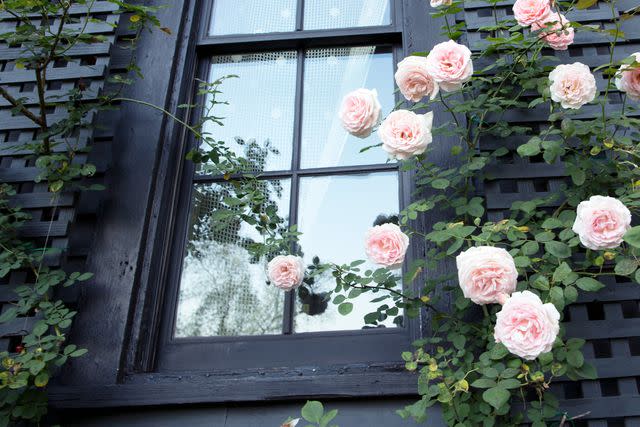How to Open a Stuck Window
Open a stubborn window, whether it's painted shut or simply won't budge, with ease thanks to these tips from the pros.
It's not unusual for older homes to have windows that have been stuck in place for years. You might decide to replace them, figuring they were painted shut for a reason. But it's possible the windows have become stuck for another reason and are still completely functional. Before you even think about demoing your existing older windows, it's best to consult a window-restoration expert like Alison Hardy, owner of Window Woman of New England and president of the Window Preservation Alliance, who can advise as to what the problem might be and whether it's a solvable one.
Broken panes, shattered glass, and other tricky window concerns are likely tasks for the professionals, but when it comes to old windows being stuck, chances are it's something you can tackle on your own. Here, Hardy shares all the details on how to fix a stuck window, starting with what can cause this household concern in the first place.

What Causes a Window to Stick
"By nature, paint is sticky so it [clings to] the painted surface," says Hardy. "If something like a window sash is not moved after painting, it can become seemingly welded in place." For that reason, if you're having your house painted, she recommends opening and closing all windows for a few days following the paint job to ensure they don't start sticking. Paint isn't the only culprit when it comes to stuck windows. Sometimes moisture in the wood or sap can be to blame. "In spring, you will find getting your windows open for the first time in months is more challenging, but patience will win," says Hardy.
:6 Best Replacement Windows to Give Your House a Facelift
When to Call a Professional
As with most DIY projects, there is typically a point when a homeowner realizes it's time to call in the pros. "If the glass is not securely attached to the sash, it could get dangerous quickly," Hardy warns. Rotting wood and large heavy windows might also provide a reason to phone the experts. "The good news is old windows are designed to be repaired, so if something breaks it can be fixed," says Hardy.
How to Open a Stuck Window
According to Hardy, the first things you need when trying to open a stuck window are time and patience. Once you've secured both of the prerequisites, follow Hardy's step-by-step instructions to learn how to open painted-shut windows. Hopefully, you won't need to go through all three steps before your window gives way.
What You Need
Utility knife or painter's 5-in-1 tool
Hammer (optional)
Step 1: Remove Bonds on Lower Sash
Using a utility knife or 5-in-1 tool, go around the edge of the lower sash to cut the paint line or caulk. Dislodge whatever is causing the issue. A hammer can provide help in breaking stubborn bonds.
Step 2: Remove Bonds on Meeting Rail
Test the window to see if it will move. If not, use the tool at the meeting rail (where the upper and lower sash come together) to try to pry the two sashes apart.
Step 3: Remove the Trim Piece
If steps 1 and 2 have been completed and the window is still stuck, you can remove the trim piece known as the front stop to help get the lower sash moving. This is also a necessary step in replacing broken sash cords. Most front stops are ½-inch thick and secured with screws. Remove the screws, then run your cutting tool down the joint of the front stop to the trim. Gently pry off the front stop, starting at the middle. Once the stop is removed, gently pull the window up to open.
:How to Remove Paint From Glass
What to Know About Sash Chords
No discussion on stuck windows is complete without mentioning sash cords. "[One] thing most homeowners don't know is that for most windows built after 1900, both the upper sash and lower sash are designed to be operable," says Hardy. "It's called a double-hung window." Opening both the upper and lower sash helps with air circulation, especially on hot days, but it relies on a sash chord to function properly. "This counter-weight system is genius—and maintaining its functionality will make your house so much more enjoyable," says Hardy. "Replacing all four sash chords (two for the upper and two for the lower) is not a difficult job and it means your windows will work safely and easily for decades to come."

